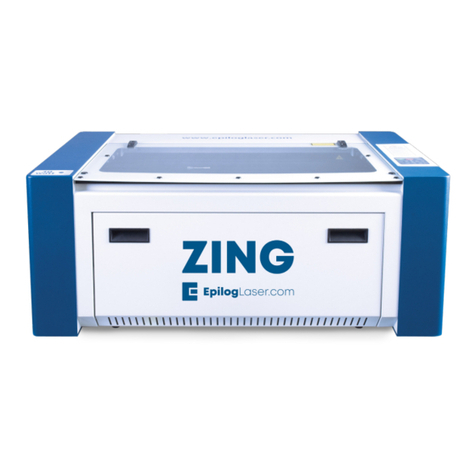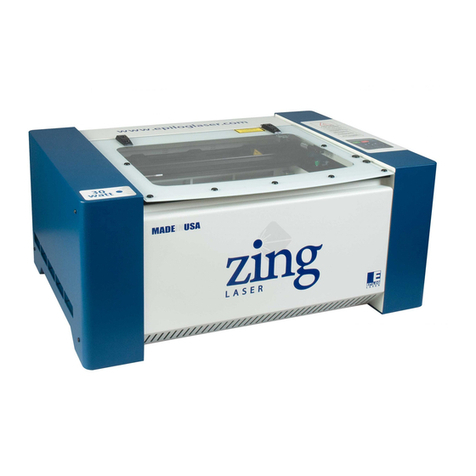
- i -
FIRE WARNING 1
INTRODUCTION 2
How to Use This Owner’s Manual ................................................................................................................................2
Icons Used in this Manual................................................................................................................................................ 2
Intended Use ...........................................................................................................................................................................4
SECTION 1: SAFETY 7
Laser Safety ............................................................................................................................................................................. 7
Electrical Safety.....................................................................................................................................................................8
Safety Features and Regulatory Compliance.....................................................................................................9
Do and Don’t...........................................................................................................................................................................13
Care Instructions................................................................................................................................................................. 14
Lifting Instructions.............................................................................................................................................................. 14
SECTION 2: GETTING STARTED 15
1. Choose Where to Locate the System ................................................................................................................. 16
2. Connecting the Exhaust..............................................................................................................................................17
3. Connecting Electrical Power................................................................................................................................... 19
4. Connecting the Laser to Your Computer ........................................................................................................ 19
5. Power on the Laser ...................................................................................................................................................... 20
6. Set the Fusion Galvo’s IP Address ........................................................................................................................22
7. Install the Software Suite & Set Up Your Laser .............................................................................................25
8. Sign Up for Driver Updates and Register Your System ...........................................................................26
SECTION 3: SOFTWARE INSTALLATION 27
Epilog Software Suite Instructions............................................................................................................................27
Uninstalling the Previous Job Manager................................................................................................................27
How to Install the Epilog Software Suite...............................................................................................................29
Windows 8/10: Ethernet Installation .........................................................................................................................35
Windows 8/10: USB Installation ...................................................................................................................................37
Troubleshooting the Job Manager..........................................................................................................................37
Important Job Manager Notes ................................................................................................................................. 38
SECTION 4: THE JOB MANAGER 39
Using the Epilog Job Manager ...................................................................................................................................39
Printing to the Epilog Job Manager ........................................................................................................................42
Organizing Your Print Jobs ...........................................................................................................................................43
Previewing Your Job .........................................................................................................................................................46
Searching for a Job ..........................................................................................................................................................47
Finding Job History............................................................................................................................................................47
Vector Sorting...................................................................................................................................................................... 48
Material Settings Tab.......................................................................................................................................................49
Job Settings Tab .................................................................................................................................................................53
Using the Material Setting Configurations..........................................................................................................55
Changing Program Settings.........................................................................................................................................57
Troubleshooting the Job Manager..........................................................................................................................59
SECTION 5: THE LASER DASHBOARD 61
Setting Up CorelDRAW for the Laser.......................................................................................................................62
Sending Your First Project..............................................................................................................................................63
Setting Up Adobe Illustrator for the Laser...........................................................................................................67
Dashboard Settings ......................................................................................................................................................... 69
Presetting Your Vector Lines.........................................................................................................................................71
Placing Your Artwork .......................................................................................................................................................72
Dividing Your Job Into Processes..............................................................................................................................73
TABLE OF CONTENTS





























